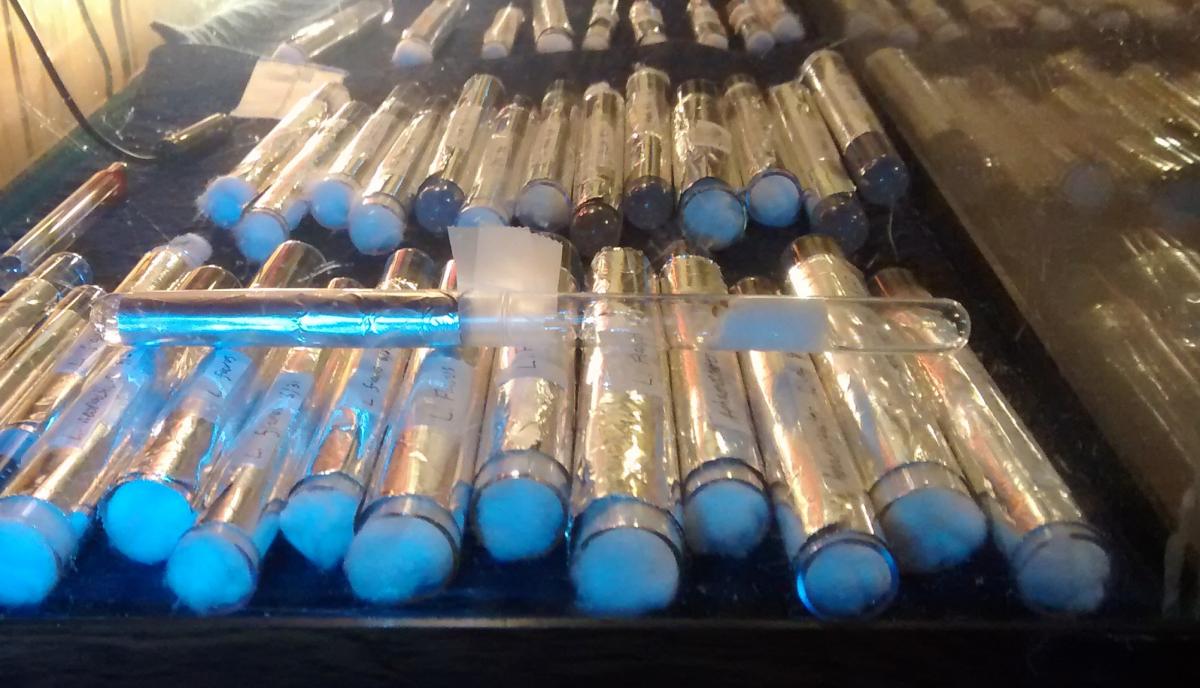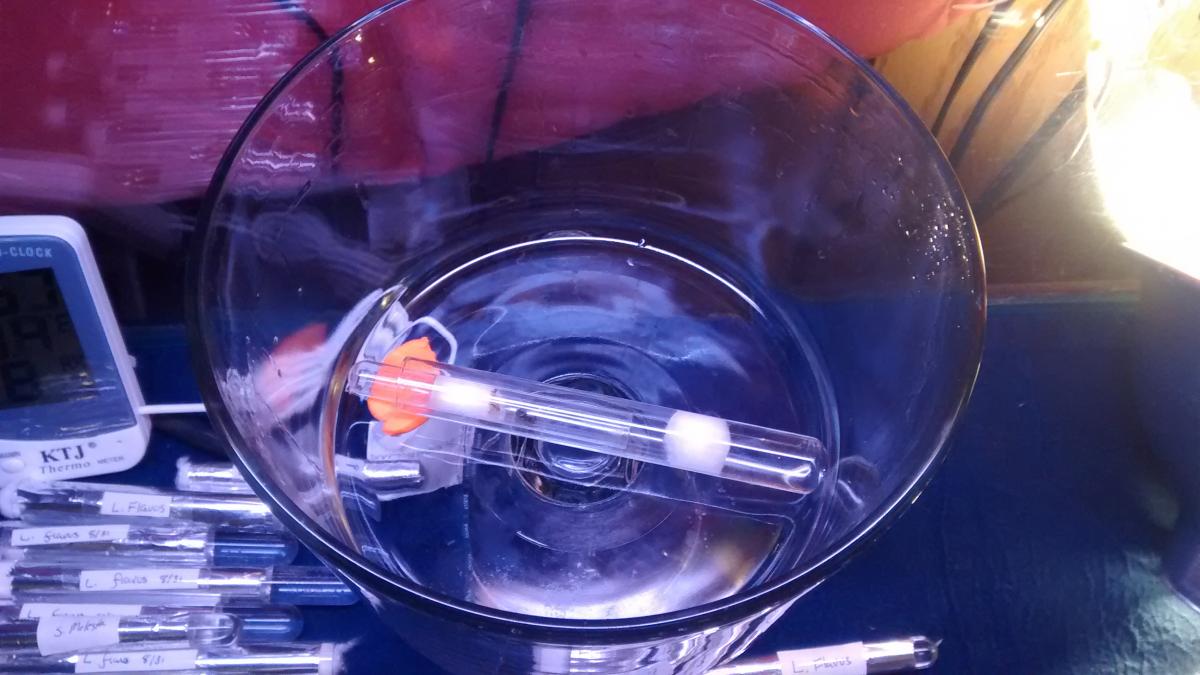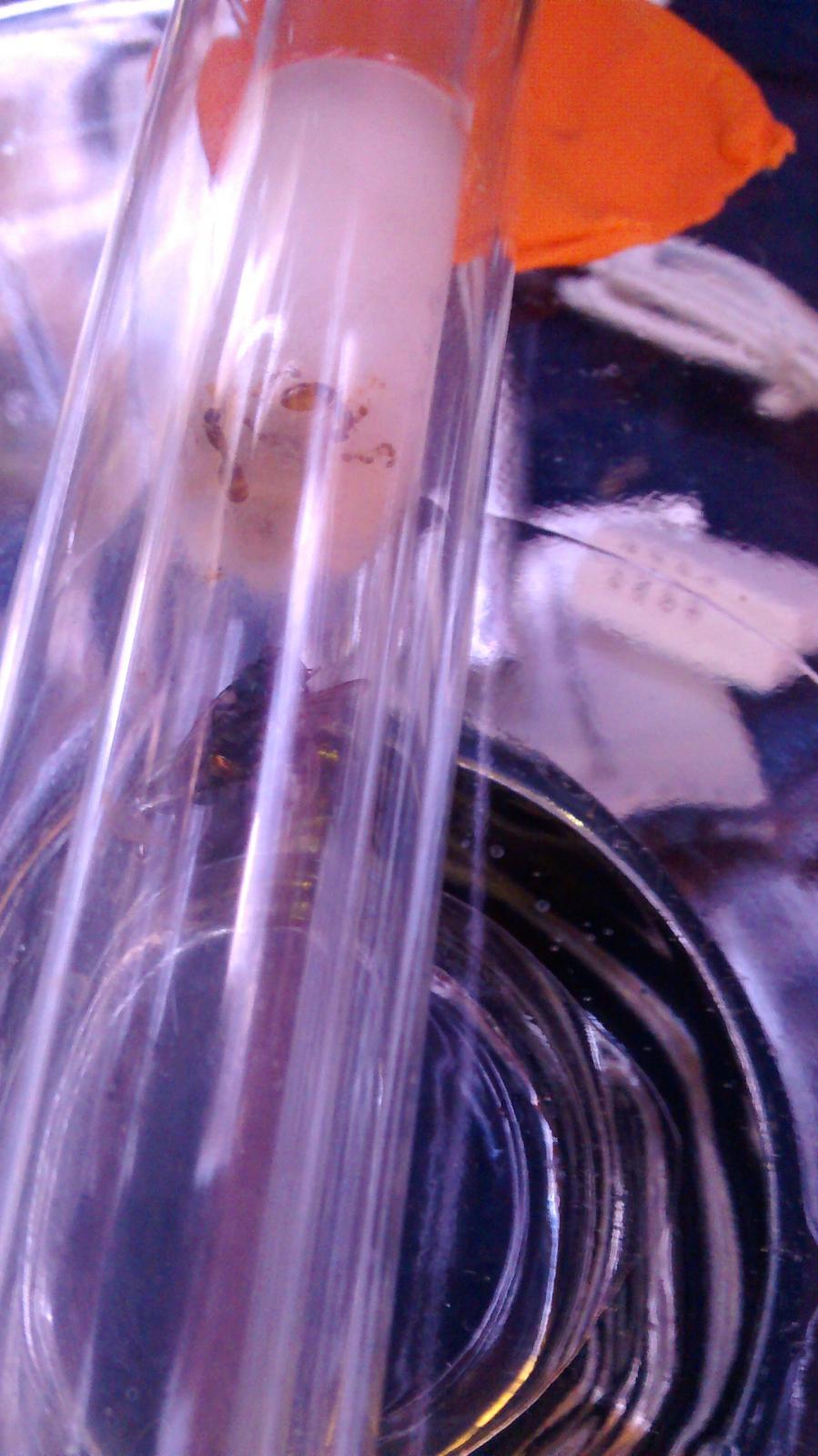I have my S. molesta queen and her first four tiny nanitics in a test tube setup. Her water is getting dangerously low and her cotton is beginning to get moldy. It's a bit early, but I figured that I need to transfer her because I'm running out of time. So, yesterday I made a new test tube setup, and taped the old one to the new one while covering the new test tube instead of the old one to make it that much more attractive (see the attached picture). The colony is taking longer than I expected it to to move into the new tube and the nanitics don't appear to be venturing into the new tube. To complicate things, I cannot feed them in this setup, and since there's no ventilation, the test tube that is low on water will not completely drain and thus give them less incentive to move. Also, since they're all exposed in the light now, I wouldn't be surprised if the uncomfortable queen is busy devouring her young even as I type. Are the tiny nanitics even capable of transferring the eggs/larva/pupae? I suspect so, but these nanitics are SO TINY! So, I'm really just looking for suggestions on how to proceed. Should I just wait it out? Should I change strategies? What do you folks think?
~Dan




















